Tennessee's 8th congressional district
| Tennessee's 8th congressional district | |
|---|---|
|
Tennessee's 8th congressional district – since January 3, 2013. | |
| Current Representative | Stephen Fincher (R) |
| Distribution |
|
| Population (2000) | 632,143 |
| Median income | 33,001 |
| Ethnicity |
|
| Occupation | |
| Cook PVI | R+15[1] |
The 8th Congressional District of Tennessee is a congressional district in Tennessee. It currently includes most of the western third of the state and borders Arkansas, Mississippi, Missouri, and Kentucky.
The district's current configuration dates from 1983, when Tennessee gained a 9th district as a result of the 1980 census. At that time, most of the old 7th District was reconfigured as the 8th District. Much of the territory in this district had been numbered as the 8th District from 1953 through 1973.
Historically, the 8th was a strongly Democratic district anchored in northwest Tennessee. Along with the 5th and 9th districts, it was usually not seriously contested by Republicans for most of the 20th century.
However, the Democrats in this district were nowhere near as liberal as their counterparts in the 5th and 9th districts—based in Nashville and Memphis, respectively. As with the 4th and 6th in Middle Tennessee, most self-identified Democrats in the 8th are usually conservative on social issues, and expect their legislators to focus attention upon obtaining federal funds for local public works or economic development projects, rather than to develop any talents for formulating public policy. This was especially important during the days when seniority played a greater role in determining Congressional influence than presently. Like their neighbors in nearby Mississippi and Kentucky, voters in West Tennessee have been gradually abandoning the Democrats in favor of Republicans over the past 20 years, largely under the influence of religious conservatism (part of the Bible Belt).
The major constituencies in the district are small-to-medium-scale farmers and working-class whites (mostly employees of small industries or trades) in the rural areas, Memphis suburbanites in Tipton and eastern Shelby counties (the U.S. Navy operates a base in Millington), affluent residents of Jackson who regularly vote Republican and African-American Democrats (generally more progressive ideologically than the region's white officeholders) who reside in the counties along the Mississippi River, those parts of Tennessee where slavery was most prevalent prior to the Civil War. For many years, these two groups largely canceled each other out in the voting booth, leaving the balance of power in the hands of voters in the counties closer to Kentucky and along the Tennessee River. As a result, it was long reckoned as a classic "yellow dog Democrat" district. However, after the 2010 census, Fayette County and most of eastern Shelby County was shifted over from the 7th district. Eastern Shelby County is the most Republican area of the state outside East Tennessee, and its addition gave the 8th a character similar to the 7th and other affluent suburban districts in the South. As a result, it is now one of the most Republican districts in the nation.
The bulk of the district's vote is cast in the whiter, wealthier sections of Memphis, as well as most of that city's suburbs in Shelby (Germantown, Bartlett, Collierville, Millington, Cordova) and Fayette counties. This area boasts some of the highest median incomes in the state, and has swollen with former Memphis residents since the 1960s. The rest of the district is composed mostly of small towns and farming communities. Jackson is the largest city located entirely in the district. The district already had a strong social conservative tint which grew even more pronounced when eastern Memphis was added to the district; many of the state's most politically active churches are located here.
Republican Stephen Fincher, the first member of this party to represent this district and its predecessors in over a century, has held the seat since 2011. He will hand the seat to fellow Republican David Kustoff in 2017 after opting not to seek a fourth term.
List of representatives
| Name | Years | Party | District Residence | Notes | |
|---|---|---|---|---|---|
| District created March 4, 1823 | |||||
| James B. Reynolds | March 4, 1823 – March 3, 1825 | Jacksonian D-R | |||
| John H. Marable | March 4, 1825 – March 3, 1829 | Jacksonian | |||
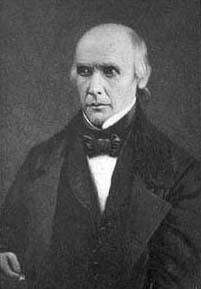 Cave Johnson Cave Johnson |
March 4, 1829 – March 3, 1833 | Jacksonian | Redistricted to the 11th district | ||
| David W. Dickinson | March 4, 1833 – March 3, 1835 | Jacksonian | |||
| Abram P. Maury | March 4, 1835 – March 3, 1837 | Anti-Jacksonian | |||
| March 4, 1837 – March 3, 1839 | Whig | ||||
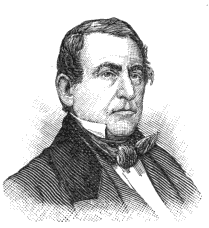 Meredith P. Gentry Meredith P. Gentry |
March 4, 1839 – March 3, 1843 | Whig | |||
| Joseph H. Peyton | March 4, 1843 – November 11, 1845 | Whig | Died | ||
| Edwin H. Ewing | January 2, 1846 – March 3, 1847 | Whig | |||
| Washington Barrow | March 4, 1847 – March 3, 1849 | Whig | |||
| Andrew Ewing | March 4, 1849 – March 3, 1851 | Democratic | |||
| William Cullom | March 4, 1851 – March 3, 1853 | Whig | Redistricted to the 4th district | ||
 Felix Zollicoffer Felix Zollicoffer |
March 4, 1853 – March 3, 1855 | Whig | |||
| March 4, 1855 – March 3, 1859 | Know Nothing | ||||
| James M. Quarles | March 4, 1859 – March 3, 1861 | Opposition | |||
| American Civil War | |||||
| John W. Leftwich | July 24, 1866 – March 3, 1867 | Unconditional Unionist | |||
 David A. Nunn David A. Nunn |
March 4, 1867 – March 3, 1869 | Republican | |||
.jpg) William J. Smith William J. Smith |
March 4, 1869 – March 3, 1871 | Republican | |||
| William W. Vaughan | March 4, 1871 – March 3, 1873 | Democratic | |||
 David A. Nunn David A. Nunn |
March 4, 1873 – March 3, 1875 | Republican | |||
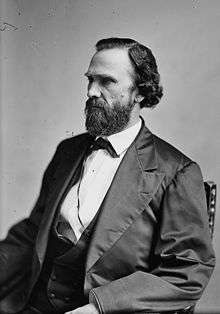 John D. C. Atkins John D. C. Atkins |
March 4, 1875 – March 3, 1883 | Democratic | Redistricted from the 7th district | ||
.jpg) John M. Taylor John M. Taylor |
March 4, 1883 – March 3, 1887 | Democratic | |||
.jpg) Benjamin A. Enloe Benjamin A. Enloe |
March 4, 1887 – March 3, 1895 | Democratic | |||
.jpg) John E. McCall John E. McCall |
March 4, 1895 – March 3, 1897 | Republican | |||
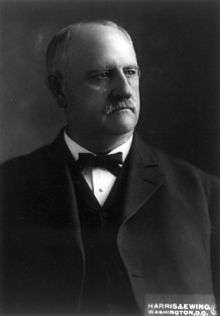 Thetus W. Sims Thetus W. Sims |
March 4, 1897 – March 3, 1921 | Democratic | |||
.jpg) Lon A. Scott Lon A. Scott |
March 4, 1921 – March 3, 1923 | Republican | Savannah | ||
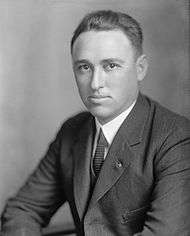 Gordon Browning Gordon Browning |
March 4, 1923 – March 3, 1933 | Democratic | Huntingdon | Redistricted to the 7th district | |
.jpg) Jere Cooper Jere Cooper |
March 4, 1933 – January 3, 1943 | Democratic | Dyersburg | Redistricted from the 9th district, Redistricted to the 9th district | |
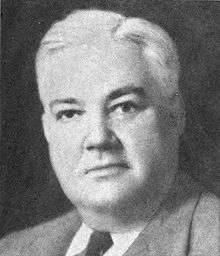 Tom J. Murray Tom J. Murray |
January 3, 1943 – January 3, 1953 | Democratic | Jackson | Redistricted to the 7th district | |
.jpg) Jere Cooper Jere Cooper |
January 3, 1953 – December 18, 1957 | Democratic | Dyersburg | Redistricted from the 9th district, Died | |
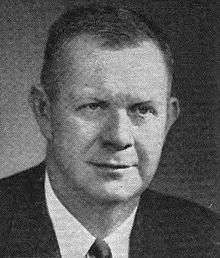 Fats Everett Fats Everett |
February 1, 1958 – January 26, 1969 | Democratic | Union City | Died | |
 Ed Jones Ed Jones |
March 25, 1969 – January 3, 1973 | Democratic | Yorkville | Redistricted to the 7th district | |
 Dan Kuykendall Dan Kuykendall |
January 3, 1973 – January 3, 1975 | Republican | Memphis | Redistricted from the 9th district | |
 Harold Ford, Sr. Harold Ford, Sr. |
January 3, 1975 – January 3, 1983 | Democratic | Memphis | Redistricted to the 9th district | |
 Ed Jones Ed Jones |
January 3, 1983 – January 3, 1989 | Democratic | Yorkville | Redistricted from the 7th district | |
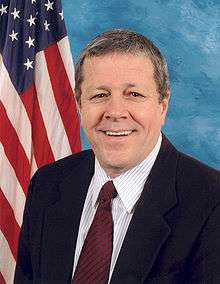 John S. Tanner John S. Tanner |
January 3, 1989 – January 3, 2011 | Democratic | Union City | ||
 Stephen Fincher Stephen Fincher |
January 3, 2011 – January 3, 2017 | Republican | Frog Jump | Incumbent, Retiring | |
 David Kustoff David Kustoff |
January 3, 2017 – | Republican | Memphis | ||
Historical district boundaries

See also
References
- ↑ "Partisan Voting Index Districts of the 113th Congress: 2004 & 2008" (PDF). The Cook Political Report. 2012. Retrieved 2013-01-10.
- Martis, Kenneth C. (1989). The Historical Atlas of Political Parties in the United States Congress. New York: Macmillan Publishing Company.
- Martis, Kenneth C. (1982). The Historical Atlas of United States Congressional Districts. New York: Macmillan Publishing Company.
- Congressional Biographical Directory of the United States 1774–present
Coordinates: 35°51′20″N 89°05′59″W / 35.85556°N 89.09972°W
.tif.png)